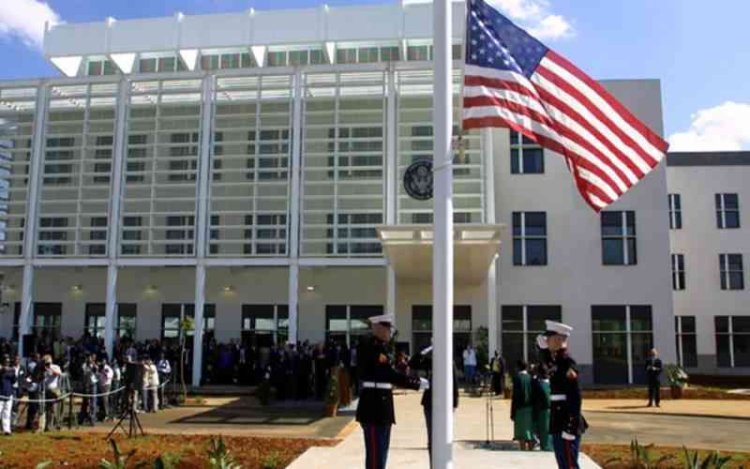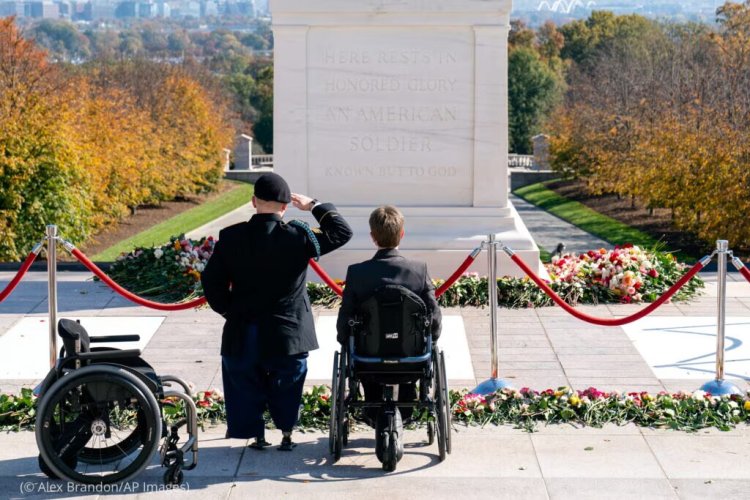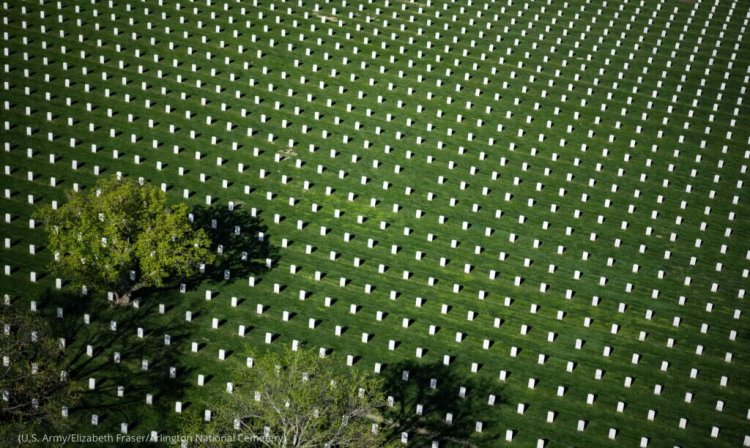Why US Embassy Nairobi Was Closed Today, Staff Given Public Holiday
Each year on the last Monday of May, US citizens mark Memorial Day whereby they honour the men and women who gave their lives in service of their country.

The United States (US) Embassy in Nairobi was on Monday, May 29 closed for 24 hours in solidarity with the American citizens who got their own national public holiday.
In a statement, the Embassy revealed that the offices were closed to allow Americans to honour the men and women who lost their lives during military service to the US, and as a result, the offices were closed, granting the Americans the day off.
Each year on the last Monday of May, US citizens mark Memorial Day whereby they honour the men and women who gave their lives in service of their country.
"Most Americans have the day off from work. Many attend parades, visit war memorials or say a prayer at a relative’s grave," the U.S. Department of State’s platform Share America stated in an article shared by the US Embassy, Nairobi.

U.S. Army Sergeant Brian Pomerville stands next to his wife, Tiffany Lee, and salutes the Tomb of the Unknown Soldier. /ALEX BRANDON.AP IMAGES
What Memorial Day Is All About
According to the explainer, one of the most significant sites for such commemoration is Arlington National Cemetery, the final resting place for U.S. military personnel of every major American conflict since the Revolutionary War. The cemetery sits across the Potomac River from Washington in Northern Virginia.
In 2022, US President Joe Biden described the fallen who lie in rows of graves there as “America’s beloved daughters and sons who dared all, risked all, and gave all to preserve and defend an idea unlike any other in human history: the idea of the United States of America.”
More than 400,000 service members who died while on active duty, veterans and their eligible next-of-kin are interred at the cemetery, which is nearly 260 hectares at present and plans an expansion for 80,000 additional burial plots.
Two U.S. presidents were buried there. William Howard Taft’s gravesite in Section 30 sits back away from Schley Drive, one of the main drives, under trees.
John F. Kennedy is buried in Section 45 at the base of the hill on which sits Arlington House, a mansion built in the early 1800s. (All presidents are eligible for burial at the cemetery, but other presidents have been laid to rest in the places they called home or at their presidential library sites.)
Before it was a cemetery, the land was an estate that had belonged to Mary Custis Lee, who was married to Confederate Army General Robert E. Lee.
The Lees lived for a time in the plantation’s Arlington House, which had been built decades earlier by enslaved people at the behest of a descendant of Martha Washington, wife of the first U.S. president. They abandoned the estate at the beginning of the Civil War in 1861, and during the war, the Union Army seized it to defend Washington from Confederate soldiers.
"Officials turned the estate into a national cemetery in 1864, as Civil War dead were filling up cemeteries nearby, according to Tim Frank, an Arlington National Cemetery historian. Like other national cemeteries at the time, Arlington segregated the dead by race and rank. (It discontinued the practice 84 years later when President Harry S. Truman desegregated the military.)
"The Lees abandoned the estate at the beginning of the Civil War in 1861, and during the war, the Union Army seized it to defend Washington from Confederate soldiers," Share America stated in part.
Officials turned the estate into a national cemetery in 1864, as Civil War dead were filling up cemeteries nearby, according to Tim Frank, an Arlington National Cemetery historian.
Like other national cemeteries at the time, Arlington segregated the dead by race and rank. (It discontinued the practice 84 years later when President Harry S. Truman desegregated the military.)
Aftermath
After World War I, Americans began honouring the dead from all of America’s wars on Decoration Day.
In 1971, Congress established Memorial Day (the last Monday of May) as a federal holiday to honour those who died while serving in the military. In recent years, Arlington National Cemetery has hosted a solemn Memorial Day ceremony at which the president lays a wreath at the Tomb of the Unknown Soldier.
The tomb holds an unknown American service member who was killed in World War I. Inspired by similar memorials in France and Great Britain, the Tomb of the Unknown Soldier is the cemetery’s most visited gravesite, drawing millions of people annually.


 admin
admin 




